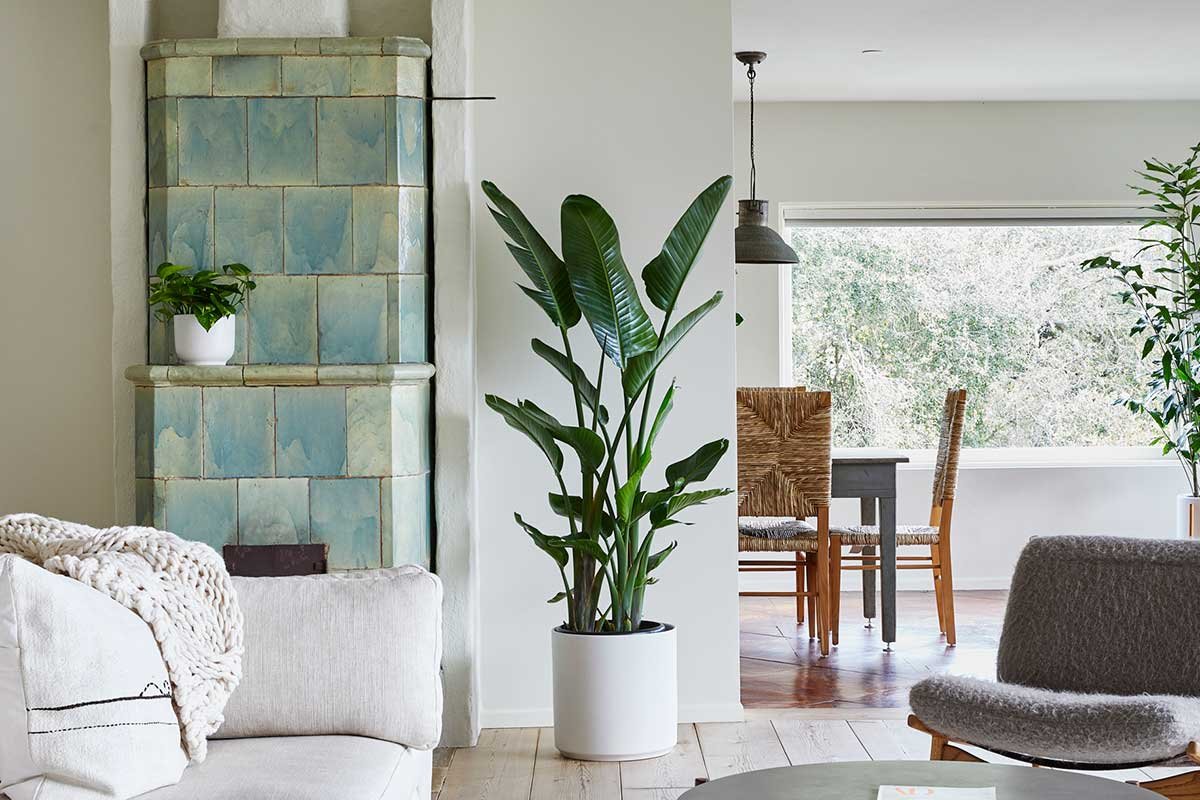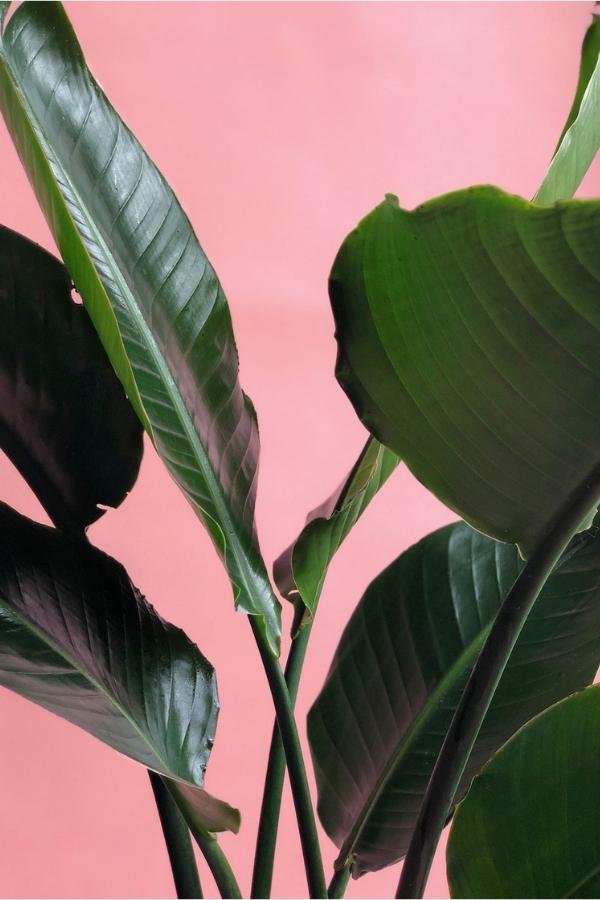What You Need To Know Before You Buy A Bird Of Paradise
Shopping for a new Bird of Paradise to grace your home or patio should be a joy, not hard work. But the truth is that purchasing any new houseplant can be tricky. After all, this is no ordinary piece of a decor: a statement plant is a living, breathing centerpiece for your space. It’s worth it to do it right- but buying a new Bird of Paradise doesn’t have to be a chore! It all comes down to knowing what to expect from your plant, and what to look for as you shop. So read on, because we’re here to fill you in on everything you need to know before you buy a new Bird of Paradise!
Your Bird Of Paradise Will Need Bright, Direct Light
Birds of Paradise love direct sunlight. It’s one of the reasons that they are such a prominent and popular plant for outdoor spaces in the sunniest locales: they are happiest when placed in spots that receive bright sunshine. And although they flourish in full sun, they also appreciate a bit of light diffusion, like most plants. Long story short: the sunniest spot in your home or yard is likely a great spot for your Bird of Paradise! If you have questions about the lighting your Bird of Paradise will need, everything you need to know about lighting requirements is available in our light guide. It’s an easy read, and a great resource!
Your Bird Of Paradise Can Grow Big And Fast
Birds of Paradise are the go-to statement plant if you’re looking for impressive overall size. Towering height, a full, gorgeous canopy: Birds of Paradise have it all. Your Bird of Paradise can grow fast with sufficient light, so if you’re looking for a plant that will consistently push out new foliage and create a breathtaking focal point, a Bird of Paradise might just be the perfect plant for you.
Now, Where To Place That Bird Of Paradise?
If you have your heart set on a Bird of Paradise, knowing where to put it is paramount. Consider its needs: it requires ample, bright sun, as we have mentioned, but what about that expansive canopy? You’d be selling the incredible aesthetic of your Bird of Paradise short by squishing it against a wall, and its large, quill-shaped foliage would not thank you for it. Plan on placing your Bird of Paradise in a sunny spot that is roomy enough for the plant to spread as it grows and worships the sun. A helpful hint: expect your Bird of Paradise’s diameter to be about as wide as the plant is tall.
Birds Of Paradise Have Wild Foliage
You have probably noticed that the foliage of a Bird of Paradise is singularly beautiful: huge, for one thing, but also fluttery, feathery and frayed. This is normal! Bird of Paradise leaves naturally create splits, frays and coils as they grow. This is an evolutionary feature, adapted by the plant to allow its foliage to dance in the wind, rather than be damaged by gusts. These splits and frays will occur whether your Bird of Paradise is placed indoors or outdoors, so expect it from the outset. We think that these imperfections are perfect- and they’re definitely perfectly natural! But if you don’t like wild leaves, you might want to try a plant with more straightforward foliage. A Rubber Tree, perhaps.
Your Bird Of Paradise Will Need only Light Watering
Birds of Paradise are conveniently drought-resistant. Sounds wonderful, right? It is! But it also necessitates a certain amount of self-control. We all love to baby our plants, but it is very important not to overwater your Bird of Paradise. That means that instead of dousing it whenever you fancy, you should be probing its soil for moisture once weekly, and watering only when its top two inches of soil are dry to the touch.
….But Its Watering Needs Will Vary By Season
One of the fun things about plants is that they’re just like us! Well, kind of. If the sun is beating down like a congo drum and you’re regularly reaching for a cold drink, it’s likely the time of year when your Bird of Paradise may also need a little more water than usual. The opposite also applies: in deep midwinter, when it’s hard to force ourselves to get our daily recommended liters of water, your Bird of Paradise may also require a bit less. The good news: you don’t have to guess. Just stick your finger down two inches into your Bird of Paradise’s soil once a week, and water only when dry.
How To Select A Healthy, Gorgeous Bird of Paradise
No matter where you purchase your Bird of Paradise from, it’s important to go with a supplier that you trust. Do a little research- it’s actually fun! Trustworthy vendors and shops will have positive reviews and helpful, knowledgeable customer service providers. If you decide to buy your Bird of Paradise from a retail shop, check the plants you’re considering for signs of browning foliage, sticky sap, and insects. If the plant appears stressed or unhealthy, it’s not the one for you.
Avoid Purchasing Your Bird Of Paradise From A Garden Center
Getting the lowest price for any purchase is tempting, but it’s not always the best choice- especially when it comes to living plants. Without strong relationships with growers and a high standard for quality, the plants offered by garden centers may have an appealing price tag, but no guarantee of a pest- free, healthy plant.
Additionally, you can’t control how your plant is treated while it’s at the garden center or retail store. Because all plant varieties have different requirements for things like light, water, and plant food, a one-size-fits-all approach is convenient for the store, but dangerous for the health and appearance of the plant.
Have you ever noticed that the nursery section of home improvement stores, garden centers and other retail locations has lots of bugs? We have too- and that is not ideal for plants. And once an insect-infested plant is in your home, there is a significant risk of the insects migrating from your new plant to the other plants in your space. Talk about something to avoid at all costs- eradicating bugs can be a time-consuming and stressful process. Save yourself a world of trouble by buying your new Bird of Paradise from a supplier that you trust. Plants that are nurtured lovingly from the start are set up for success for years to come.
How To Select The Right Size Of Bird Of Paradise
With this one, the ball is really in your court! If you are looking for a tree-sized statement plant to illuminate an entire room with vibrancy, you can’t go wrong with an extra large Bird of Paradise of five feet or more. If you’re wondering if a Bird of Paradise that large will continue to grow, well, the answer is yes! Birds of Paradise can reach ten feet in the wild, and although that would be unusual in a domestic environment, you can expect gorgeous growth from any well-cared for Bird of Paradise.
If that sounds a little too large for you, opt for a Bird of Paradise of three to four feet. Birds of Paradise of this size are still statuesque and lovely- and their aesthetic impact is still dazzling. But you may find that your options for placement are more varied if you select a smaller plant. And again, your Bird of Paradise will grow!
Even The Healthiest Birds Of Paradise Can Experience Stress From Time To Time
Plenty of people have had experience with plants that just didn’t seem happy, and usually the issue is significantly easier to identify and treat than you’d think. Most issues with Birds of Paradise come down to a simple case of overwatering or insufficient light. At Leon and George, we offer lifetime Plant Doctor support to every customer that purchases a plant from us. That means that we have a team of master gardeners on staff to assess any issues, suggest care adjustments, and guide you in your plant parenthood. You never have to go it alone! And you can start on strong, green footing, because we have fun, detailed articles on plant care, styling and more available twenty-four hours a day at La Residence.
Bird of Paradise
A lush and vibrant statement floor plant with a gorgeous canopy of wild, quill-shaped foliage. Perfect for sunny spaces, the Bird of Paradise requires only light watering and is a low-maintenance option for plant owners on the go.







